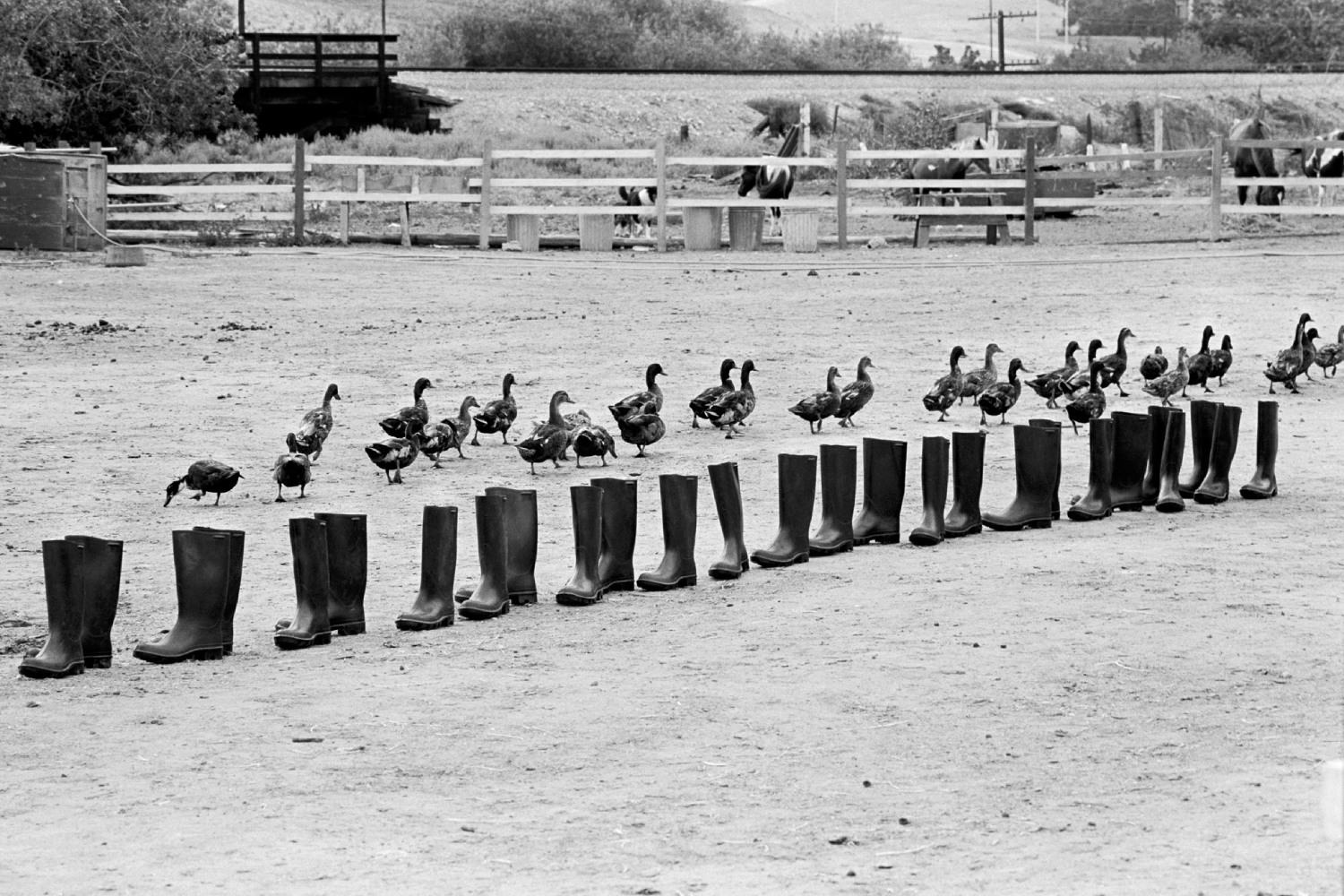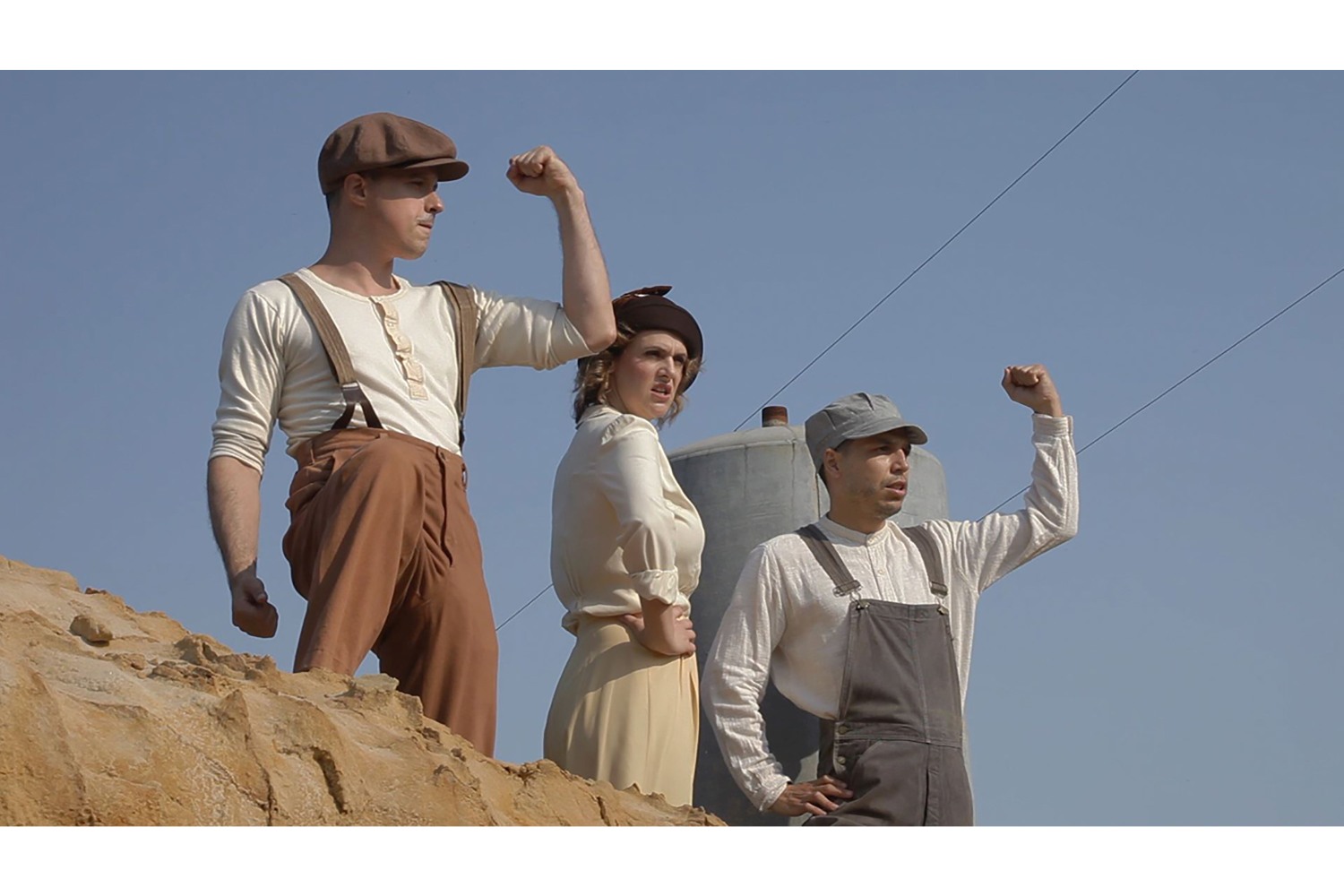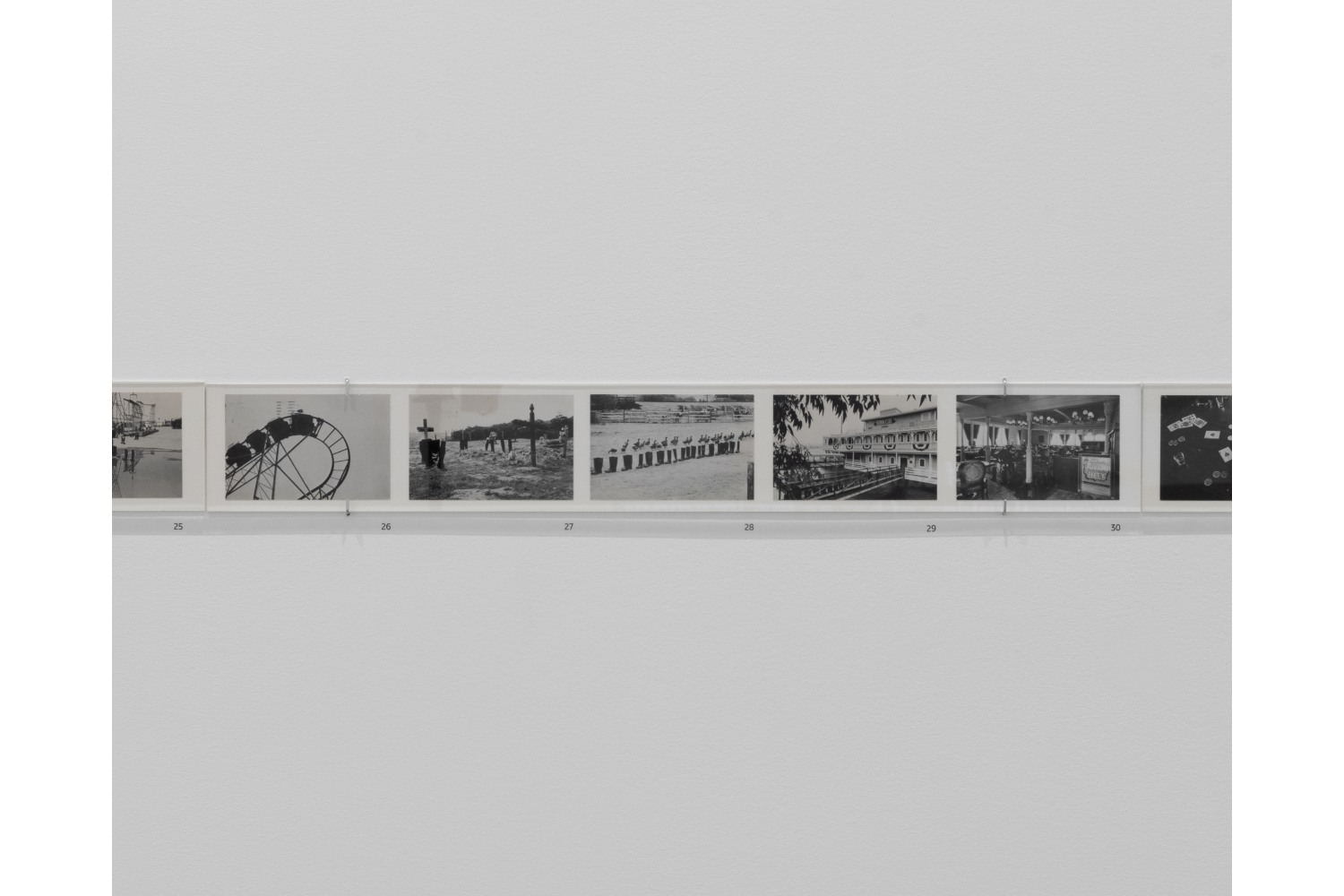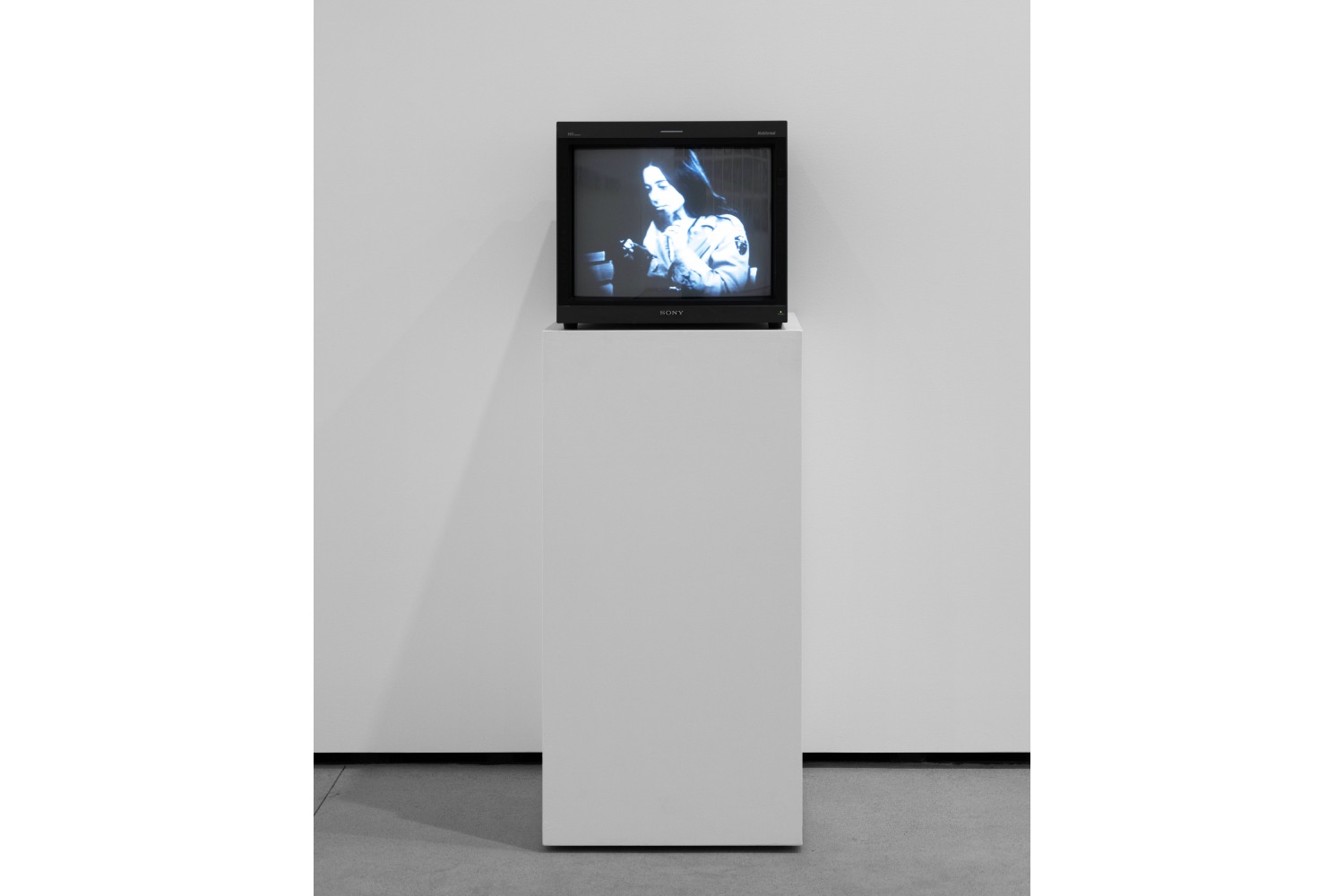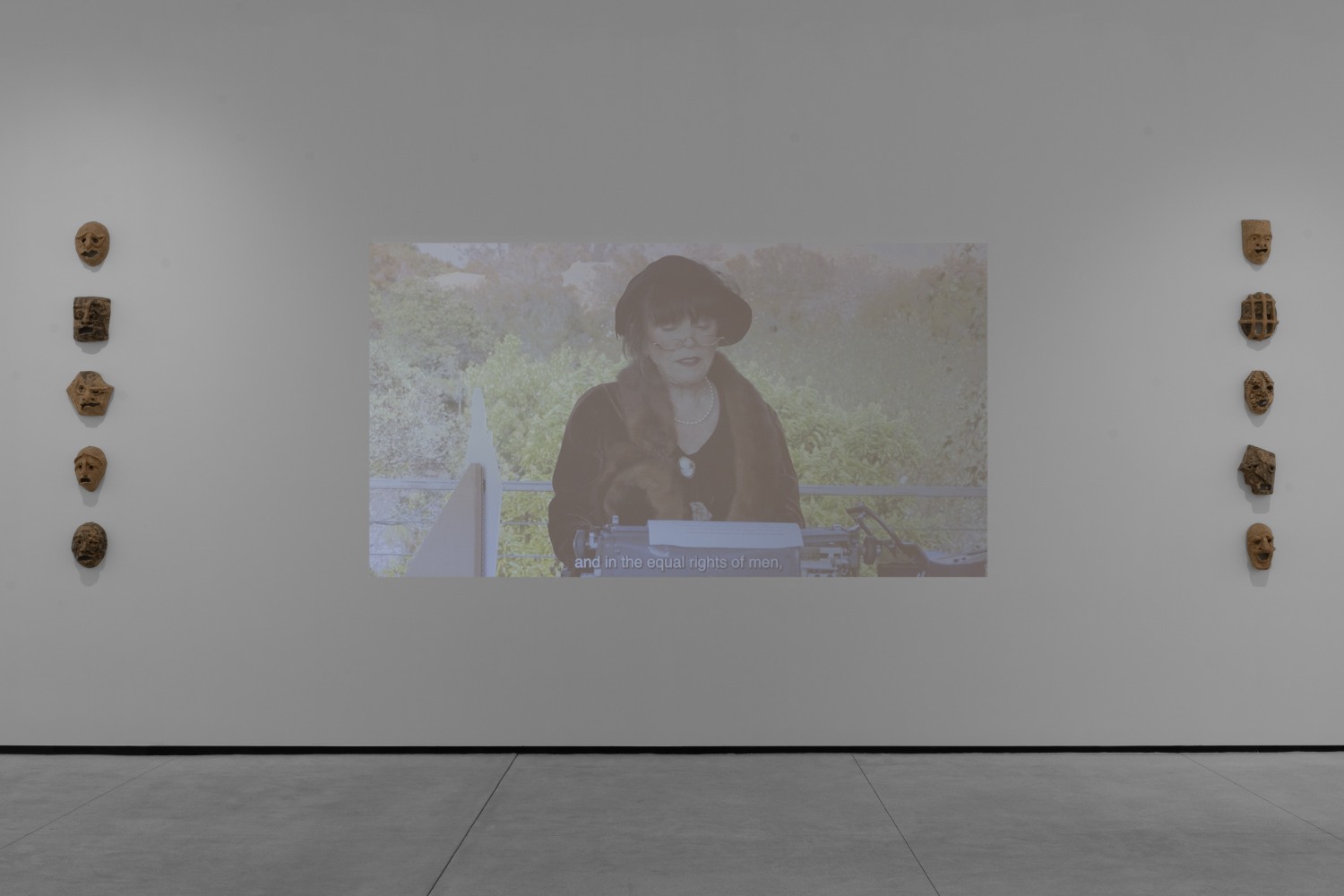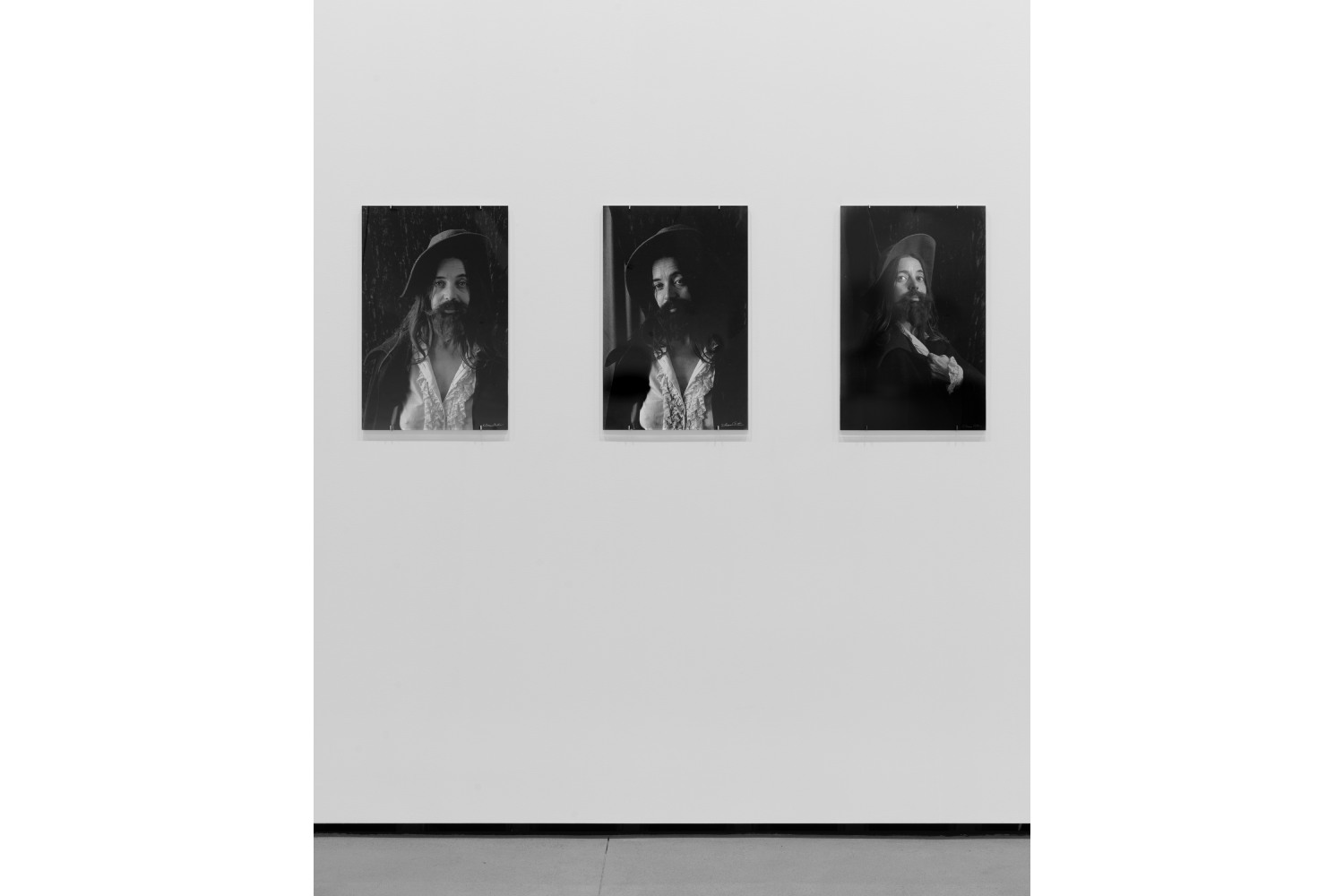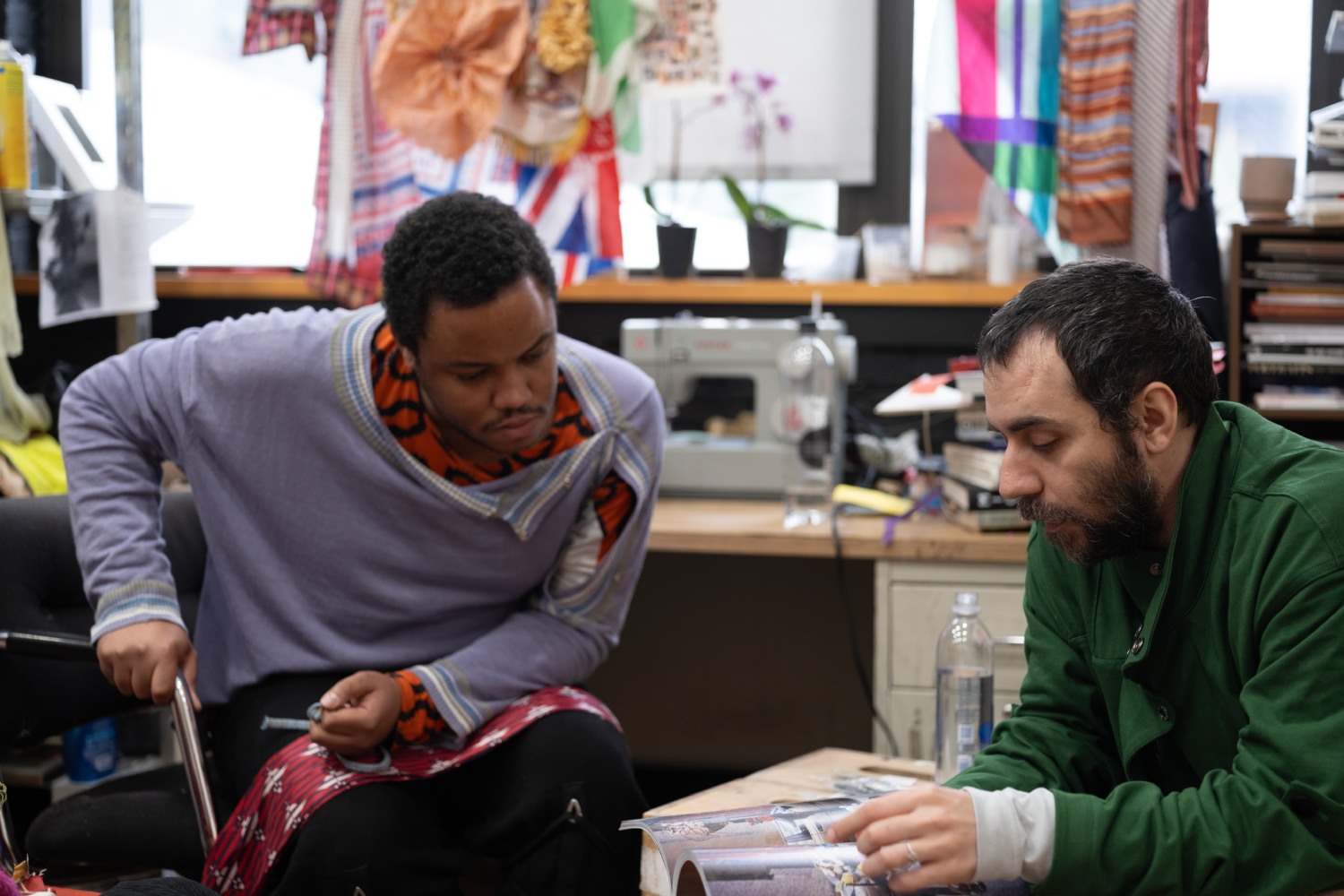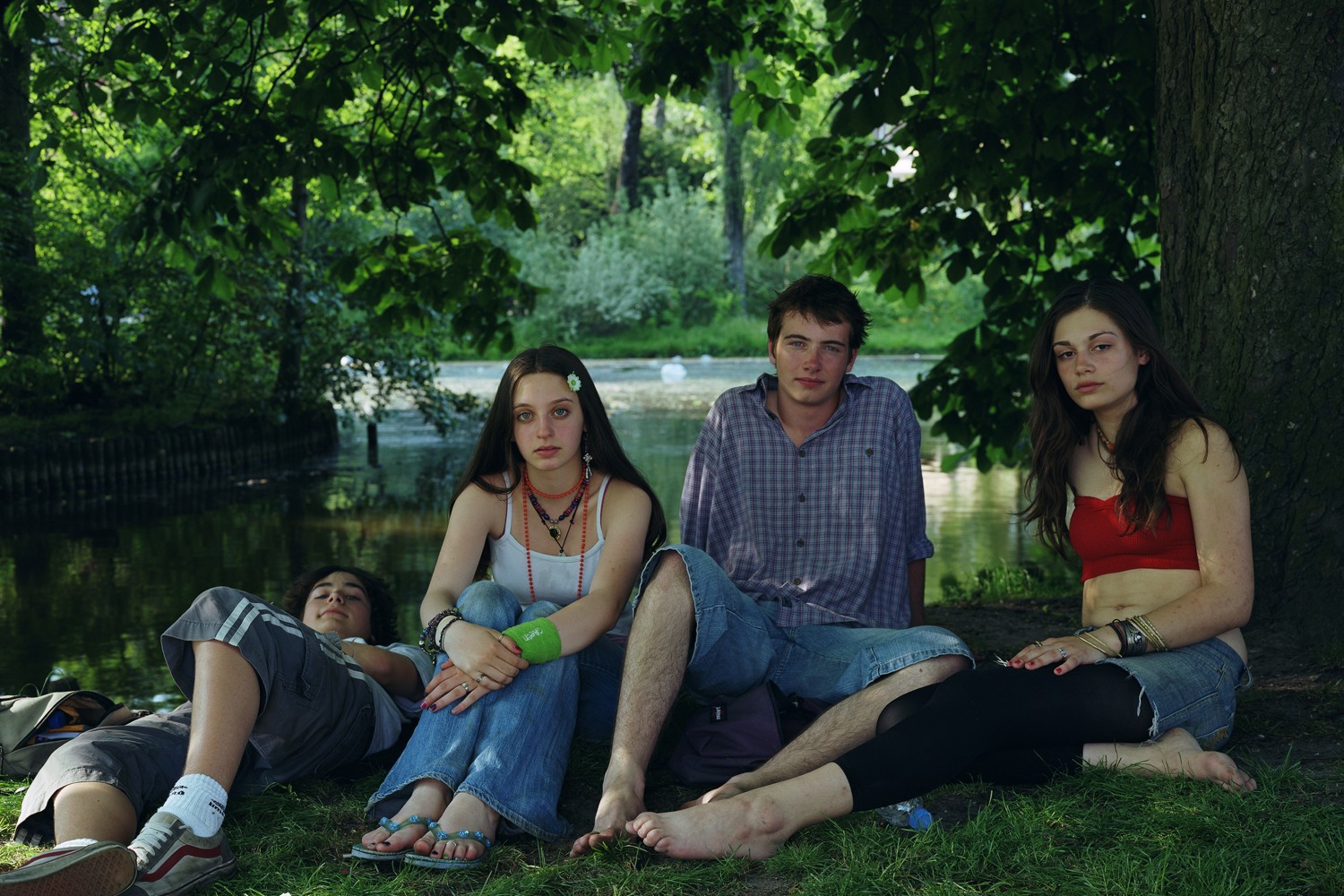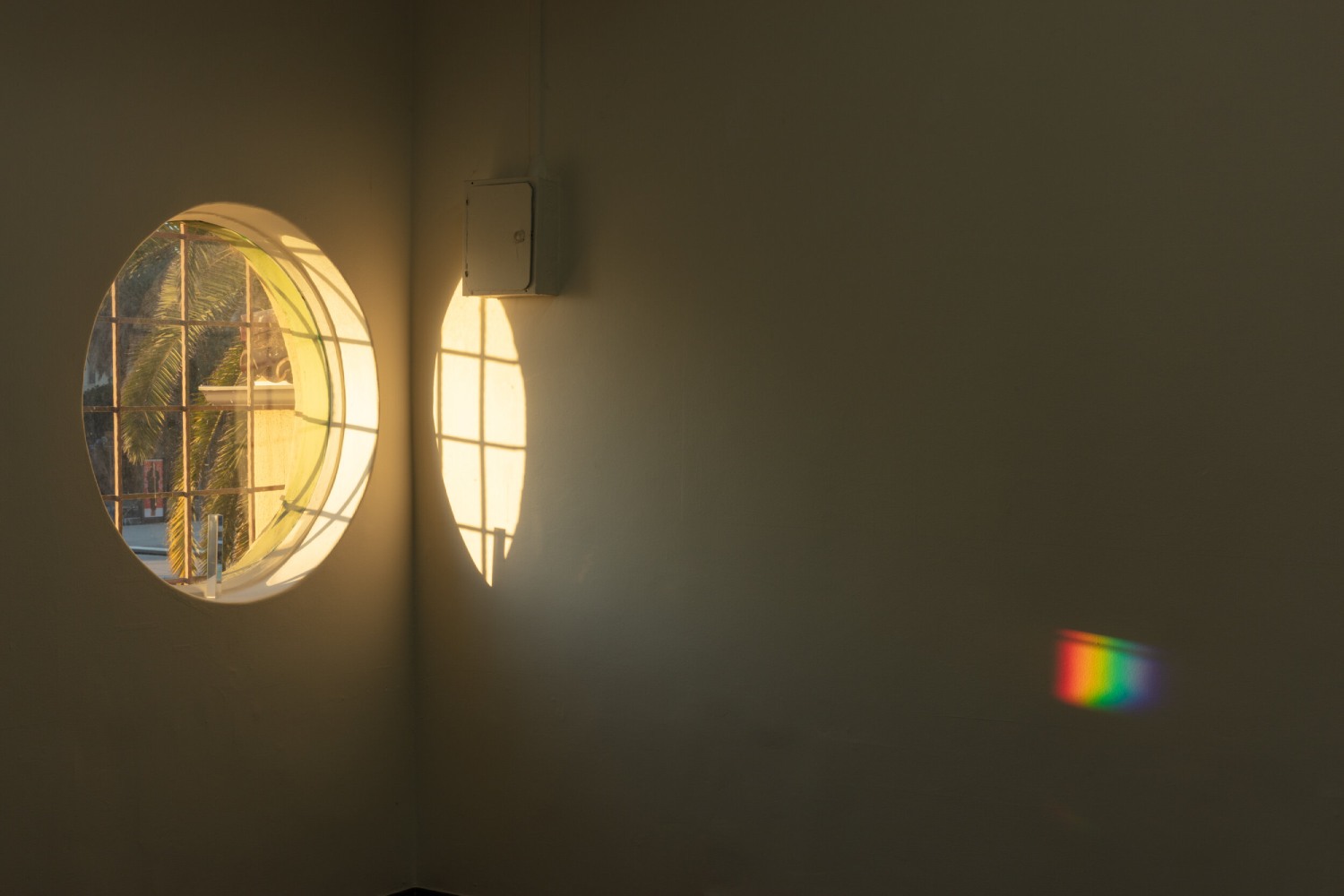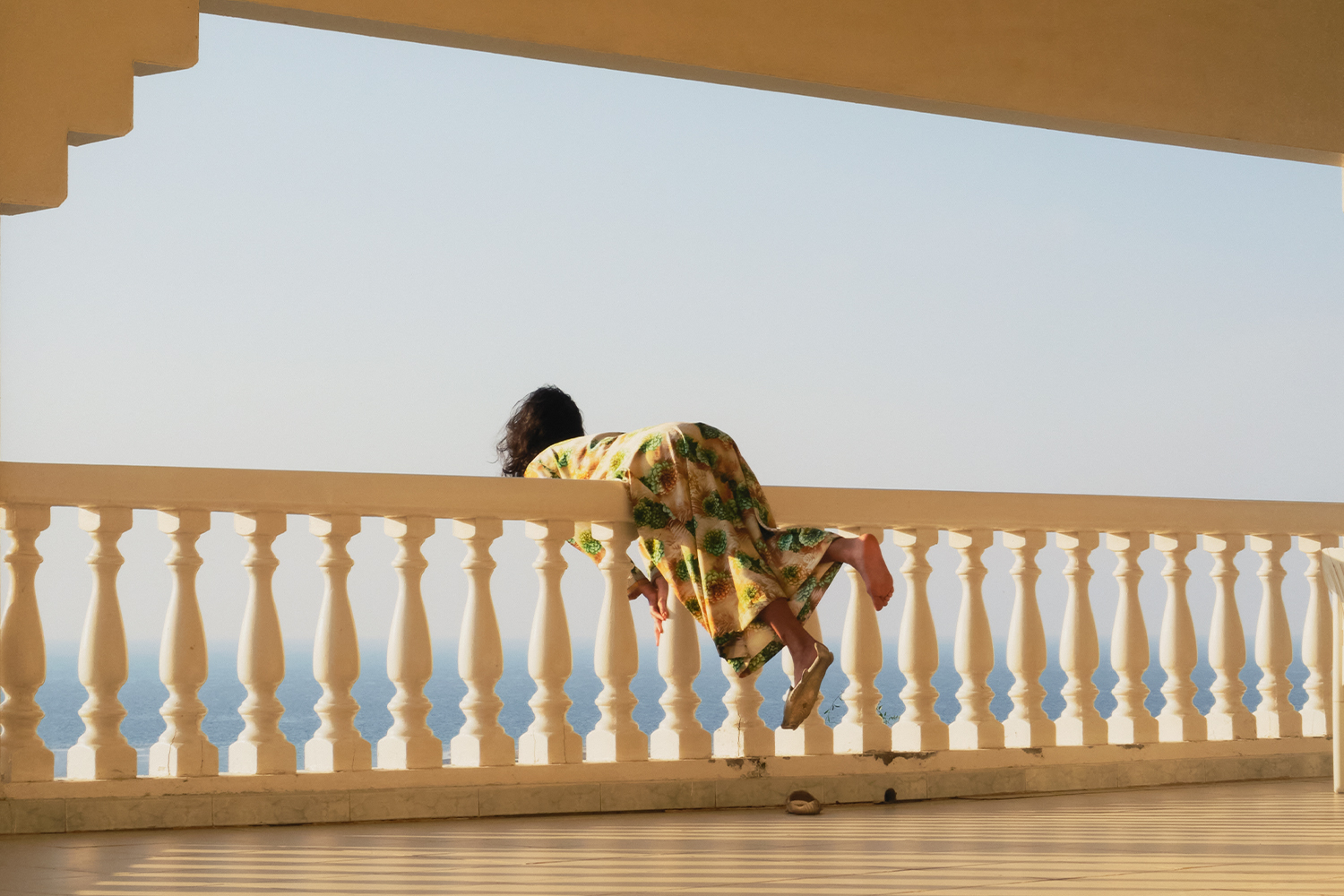Currently on view at the Museum of Contemporary Art San Diego (MCASD), is the economically titled exhibition “Eleanor Antin and My Barbarian.” Featuring two works of Antin’s from the 1970s and two more recent works from My Barbarian (Malik Gaines, Alexandro Segade, and Jade Gordon), the exhibition tautly emphasizes the artists’ use of identity, subject formation, and history. Antin is positioned here as a “matron of the arts” (excuse the pun), that is, an artist who infused conceptual art’s cold hermeticism with the political questions of second-wave feminism then being discussed. The exhibition suggests, and it is undoubtedly true, that Antin’s feminist performance pieces gave license to later generations of artists to use the fuzzy boundaries of identity as a pliable material. Antin’s playful exploration of identity is shown via six photographs from her 1972 to 1974 performance The King of Solana Beach. Conducted just thirty miles from MCASD, Antin dressed in the imagined costume of a sixteenth-century king, including tall leather boots, a ruffled white blouse, long pointed beard, and an oversized cavalier’s hat. The artist then walked around Solana Beach, a surfing community in San Diego, greeting passersby with chivalric flourish, doffing her hat, and dramatically kissing the hands of women willing to interact with her. The six photographs on view here are of two types: three recall the regal sixteenth-century portraiture that her costume approximates; the other three are more humorous, showing Antin as “the king” touring his realm: in line at the grocery store, drinking beer with surfers at the beach, and chatting with an older man on the sidewalk. Also included is an intimate video piece that cuts to the core of Antin’s practice, in which we encounter her putting on the costume, in the midst of transformation, engaging in the feminine-coded practice of putting on makeup. But as she methodically applies her face paint, she becomes more alienated from the feminine until finally she is the ultimate symbol of masculinity and political power: the king. Notably, Antin’s self-alienation is also temporal, taking on the persona of a sixteenth-century king who is then transported to the 1970s. In these multiple, intersecting forms of reconfigured identity, Antin invites us to consider the political potential of subject formation. Performing as the king of Solana Beach jolts the conservative beach town like a discordant note in a song long known by heart.
My Barbarian’s similar interest in history, time, and identity is revealed in Universal Declaration of Infantile Anxiety Situations Reflected in the Creative Impulse (2013), a video piece composed of vignettes examining motherhood, prominent women in history, and feminist thought. The first part features another towering feminist conceptual artist, Mary Kelly, dressed in turn-of-the-century clothing and playing piano, while Jade Gordon sings: “The Oedipal dramas of art history are staged between fathers and sons on the bodies of mothers.” Immediately, themes of motherhood, history, and gender rise to the surface. Though the vignettes vary in tone and format, the third features Antin herself dressed in period clothing, this time as Eleanor Roosevelt. Here, Antin sits at a typewriter composing a draft of the Universal Declaration of Human Rights, an early United Nations text that Roosevelt helped conceive and which provides part of the piece’s title. As she types, Antin mutters insults at a drawn cutout of a typical capitalist “fat cat”; meanwhile My Barbarian playact as workshop laborers in the background. Here Roosevelt’s feminist legacy is both recognized for her contribution to the codification of human rights, and questioned for her focus on human rights in the abstract, while ignoring the workers in her immediate presence.
Antin’s appearance in My Barbarian’s video suggests an active relationship between the artists. The collective is not simply recalling Antin’s legacy but engaging with her as an active artist. Despite this, the exhibition’s framing suggests a more traditional reading of their relationship. While showing these artists together is undoubtedly fruitful, given their mutual admiration and shared connection to San Diego (Malik Gaines and Alexandro Segade are faculty at UCSD), the close ties between the artists, both thematically and personally, diminish the stakes of the exhibition. They are almost so complementary as to leave nothing askew, no new threads to pull. Given the artists’ interest in alternative understandings of identity and community, this felt like a missed opportunity for Antin’s work to come alive as, yes, a “mother,” but also a contemporary of My Barbarian. This would allow the exhibition to join the conversation that Antin and My Barbarian are already having, one in which time itself is malleable and artistic connections across generations need not be reduced to the Oedipal dramas of fathers and sons.

